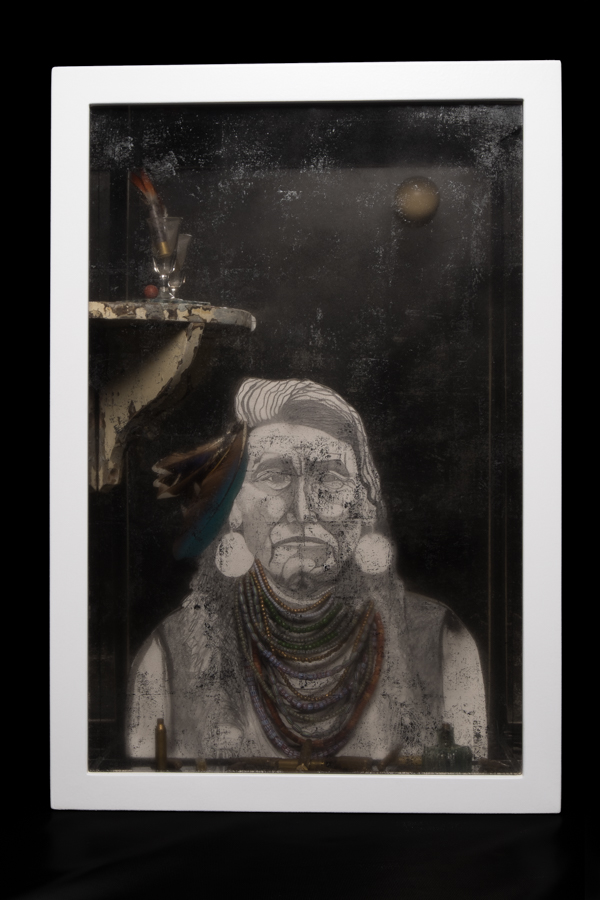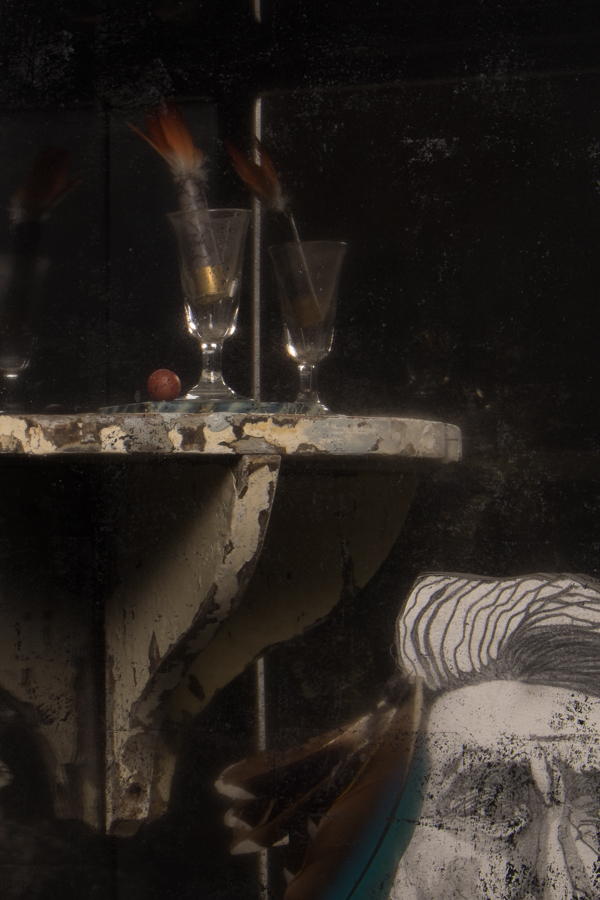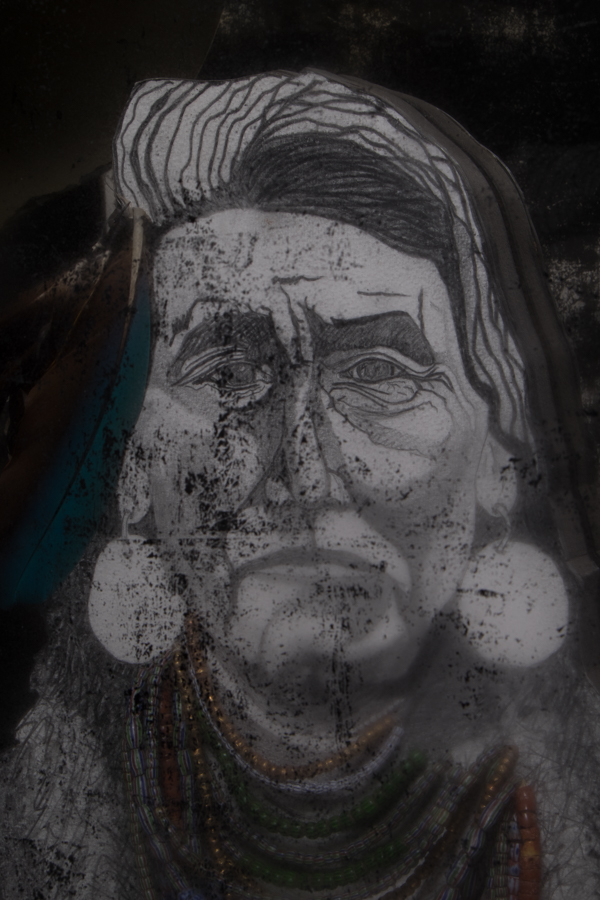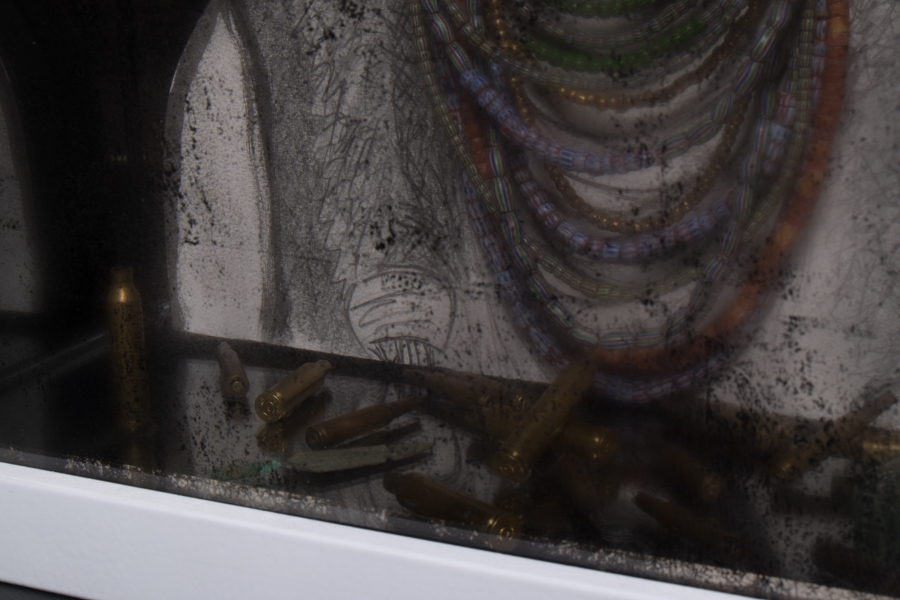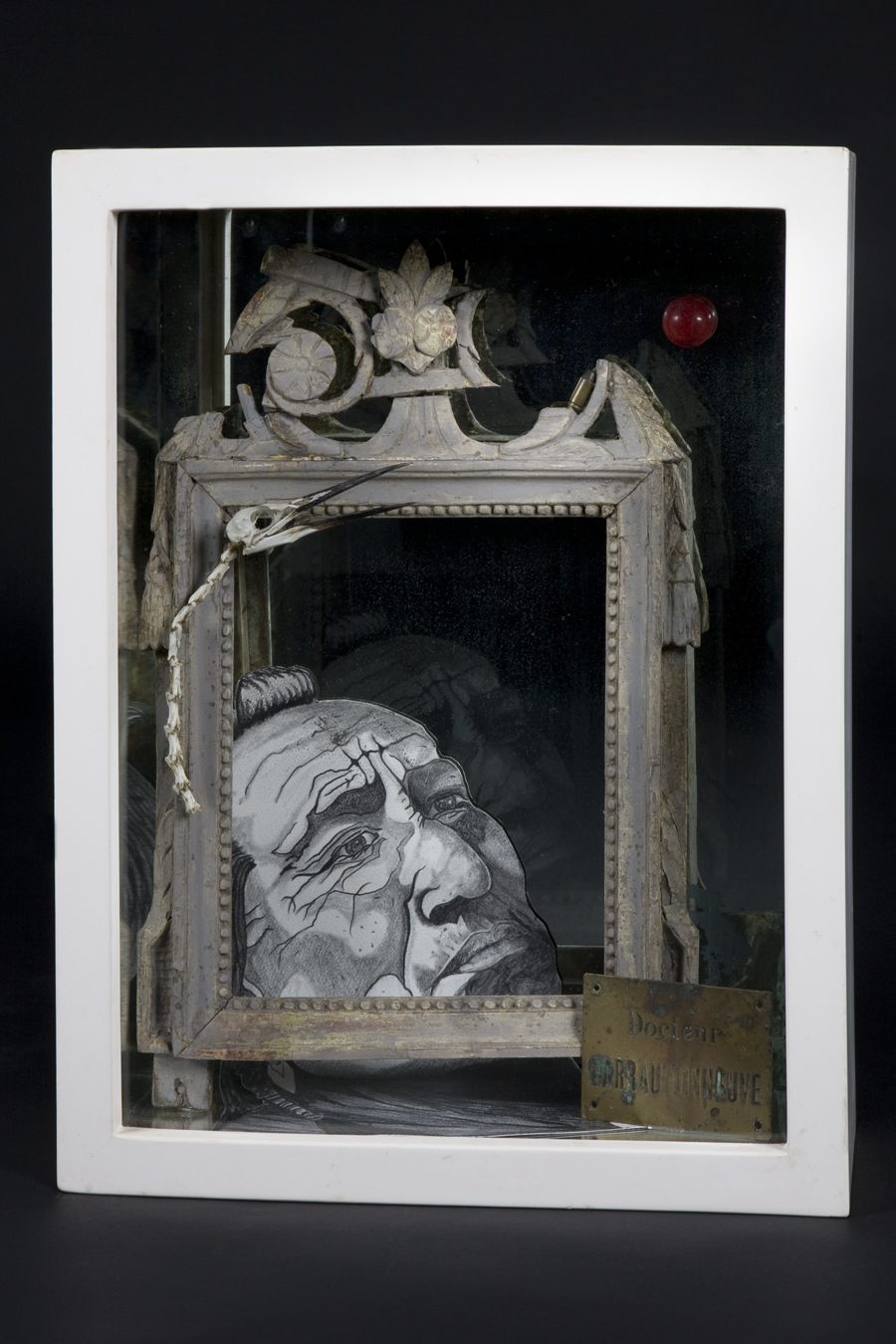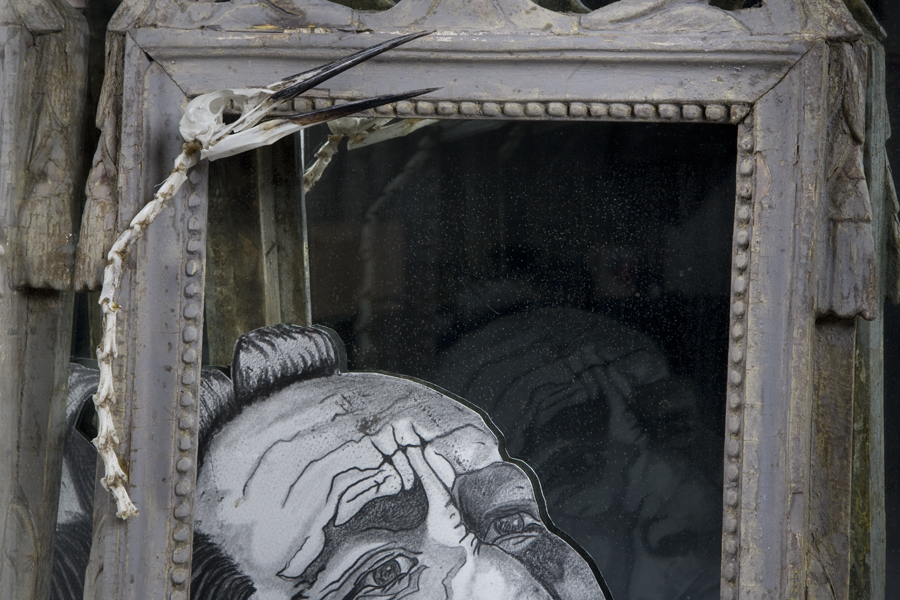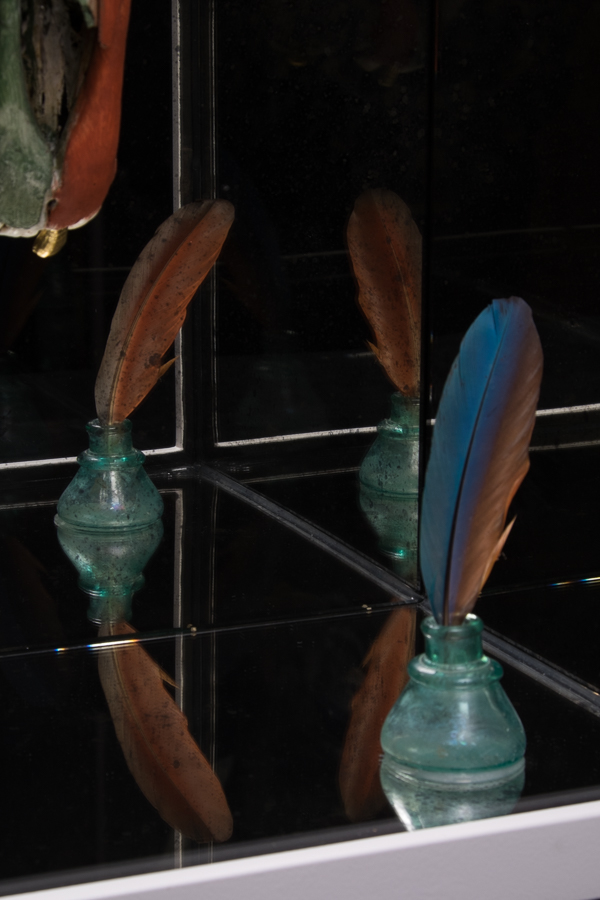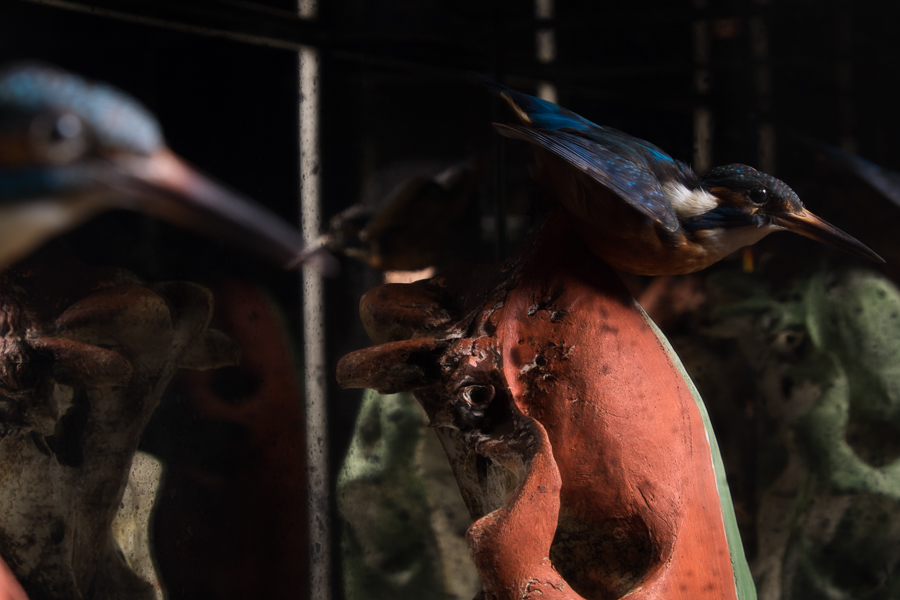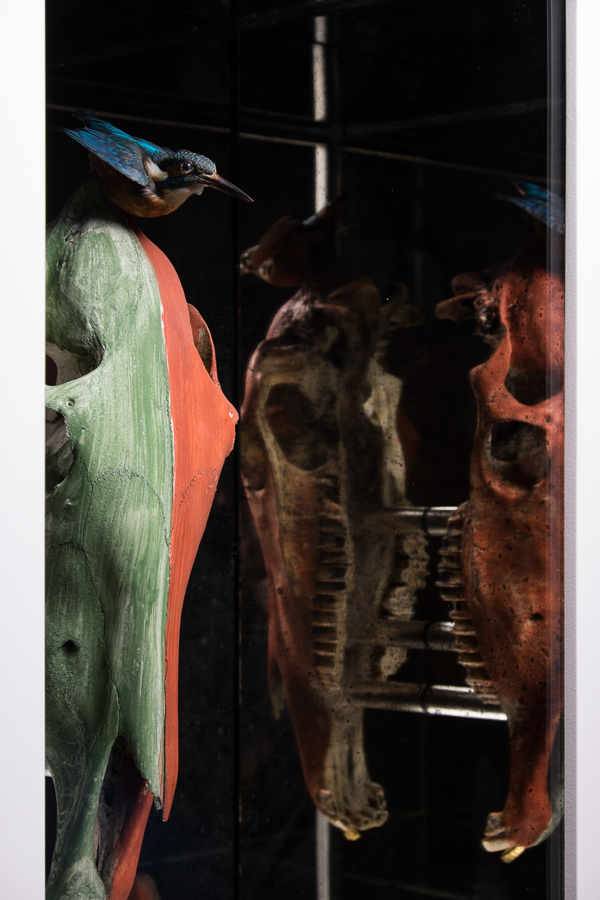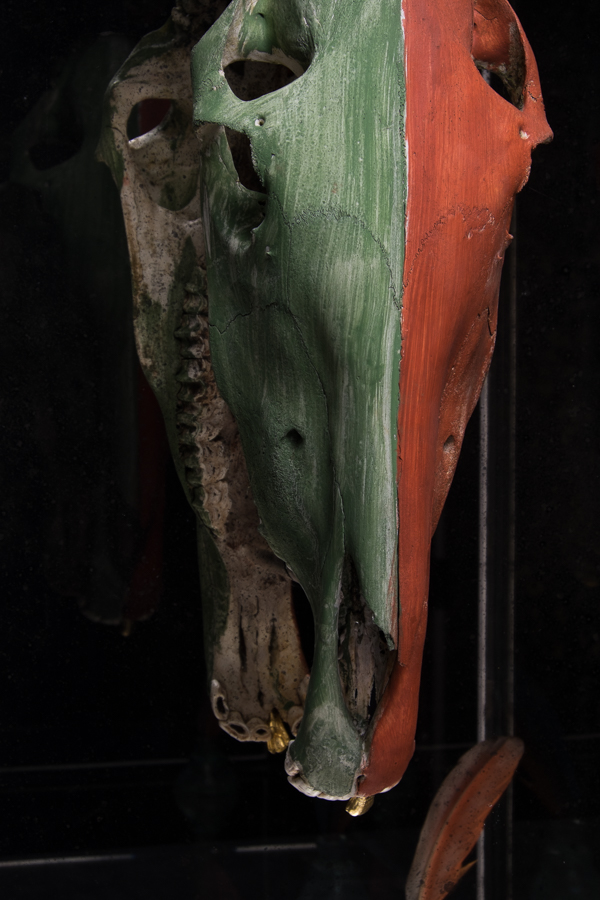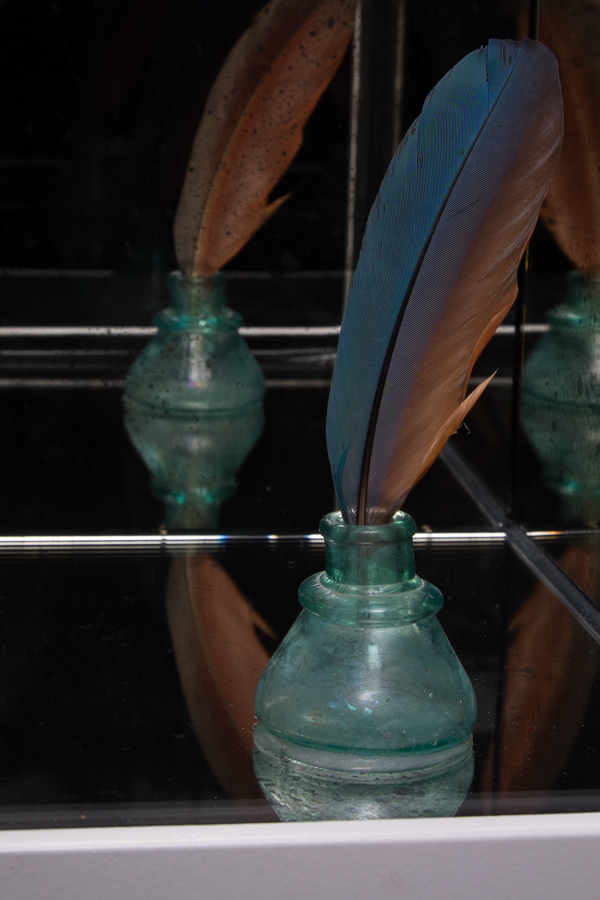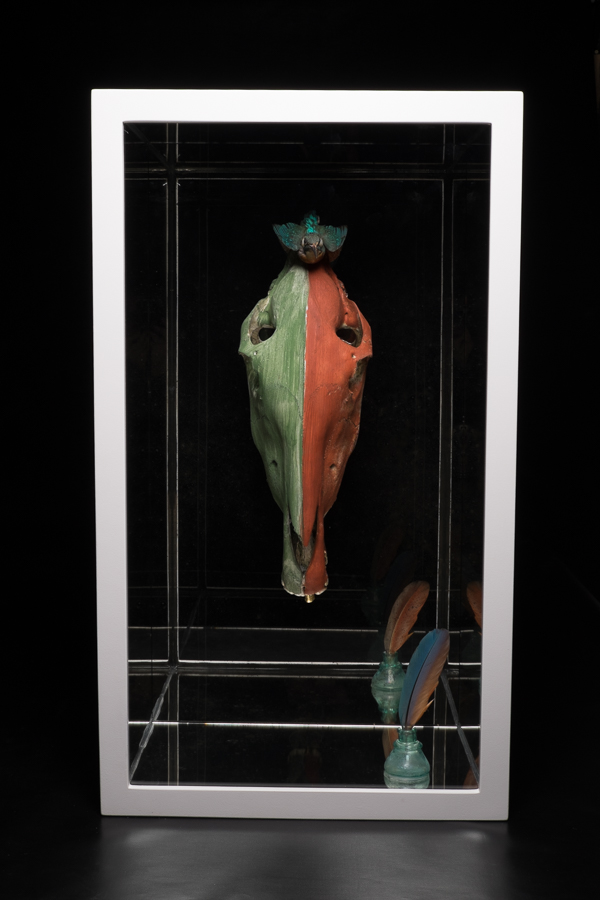This is the final piece in my trilogy of tributes to Native Americans & their fight to preserve their lands and culture.
'Bury my heart at wounded knee (II)' is a bespoke assemblage box containing one of my original sketches, behind verre églomisé treated glass to give a distressed look, brass gun shell cases, parrot tail feathers, with antique glasses, shelf and mirror behind (535mm wide, 790mm high, 245mm deep).
It is titled after the 1970 book of the same name by author & historian Dee Brown that covers the history of Native Americans from their perspective. It describes a series of betrayals and injustices by the US government, who are depicted as destroying indigenous culture.
Wounded Knee is where the last major confrontation took place between the US Army and Native Americans. It is where Crazy Horse's parents buried his heart and some of his bones after his death in 1877.
You can read about the other two pieces in this trilogy by following these links:
http://www.paulbroomfield.co.uk/blog/burymyheartatwoundedknee
